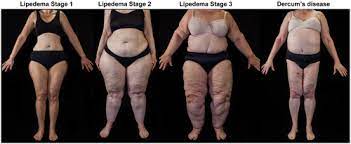Dercums disease is a condition affecting the lipomas. It can be difficult to diagnose, and there are no standard diagnostic procedures. Your doctor will need to rule out other conditions before recommending a treatment plan. Your doctor may perform a biopsy of the lipomas to confirm the diagnosis. This involves removing a small sample of tissue and examining it under a microscope. Other diagnostic procedures may include a CT scan and an MRI. Many people with the disease benefit from a combination of medications and treatment. If you are experiencing severe pain from the condition, you should speak with a pain management specialist.
What are the symptoms of Dercums disease?
People who suffer from Dercums disease may experience a variety of symptoms. Although no single cause is identified, the disorder is believed to run in families. Genetic changes and traits may play a role in the development of the disorder. However, other factors can also contribute to the development of the condition. People who are Caucasian or white are more likely to develop the disorder than other races. Symptoms may include muscle weakness, fatigue, and headaches.
Although no research has been conducted to determine whether Dercums disease is a chronic condition, it is thought that pain can worsen over time. The pain associated with this condition may be so severe that it interferes with daily life. However, there are treatments for the pain, including a local anaesthetic injection or patch.
How is Dercum’s disease treated?
Although there is no standardized treatment for Dercum’s disease, doctors will use general strategies used in the treatment of other types of chronic pain. In addition, they will use imaging tests, including MRI and CT scans. For best results, people with Dercum’s disease should work with a pain management specialist.
Dercum’s disease most commonly affects people between the ages of 45 and 60. Children are rarely affected. When this condition develops, lumps on the skin may press against nearby nerves and cause significant pain. This pain may worsen when the skin is moved or touched.
The symptoms of Dercum’s disease can occur abruptly or slowly. Typical symptoms include multiple painful subcutaneous lipomas, fatigue, and central nervous system disturbances. Pain may also extend to the skeleton. The pain is described as aching, burning, and smarting.
How progressive is Dercums disease?
One 57-year-old Caucasian man was diagnosed with Dercums disease. He had a history of previous surgical procedures, including a partial gastrectomy for gastric neoplasia, cholecystectomy for chronic inflammation of the gallbladder, and multiple lumbar discal herniations. In May 2013, he presented with painful subcutaneous swelling that extended to the proximal regions of the arms and legs. His condition became progressively worse, and he took leave from work.
Dercum’s disease has no specific laboratory tests for the diagnosis, but it is often diagnosed on the basis of symptoms. In most patients, a fat biopsy will show that the mass is a lipoma without inflammation. However, one study described an elevated level of connective tissue in the fat biopsy of a patient with Dercum’s disease. In addition, magnetic resonance imaging revealed fatty lesions in the superficial subcutaneous fat. These imaging techniques revealed more lesions than could be seen during a physical examination. Despite the fact that the majority of Dercum’s disease lesions are clinically asymptomatic, imaging tests have the potential to provide a clearer diagnosis.
Is Dercum’s disease a disability?
Dercum’s disease is a rare disorder characterized by multiple, painful lipomas in various parts of the body. It mainly affects middle-aged, post-menopausal women. It may also occur in people who are not obese. Symptoms of Dercum’s disease can be severe and debilitating, preventing patients from performing normal daily activities.
There is no known cause for the disease. Researchers are still trying to determine why it happens, but it appears to occur spontaneously and without apparent cause. In some cases, lipomas associated with Dercum’s disease may press on nearby nerves. This causes excruciating pain, which can become worse with movement.
Symptoms of Dercum’s disease can include generalized weakness, fatigue, and bruising. It can also cause stiffness and headaches. Patients with the disease may also experience irritability and mental deterioration. In severe cases, it can also lead to depression.



